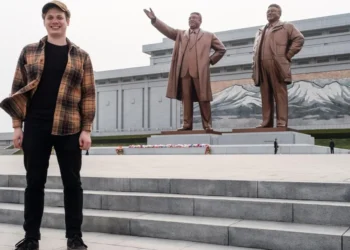An indication that Trump’s trade war is behind the US Speaking to media after the weekly Democratic Senate policy luncheon at the U.S. Capitol on April 1, Tim Kaine (D-VA). Images from AFP
In our globalized world, spilling your Mexican drink on your Vietnamese-made t-shirt while sitting outside at a Parisian cafe and watching a US series on Netflix on your Chinese-made smartphone is common. But will globalization come to an end as a result of the tariff battle that US President Donald Trump started?
According to several analysts, nations will continue to trade and rely on one another, but it will be more expensive and complicated.
On Wednesday, Trump declared that he will raise tariffs on China to 125%. Still, he also issued a 90-day halt to his promised “reciprocal” taxes on all other countries, leaving in place the newly implemented 10-percent general tariff.
Through the 1947 General Agreement on Tariffs and Commerce, nations started lowering tariffs to promote commerce and economic expansion following World War Two. The World Trade Organization, which brought together 166 countries and accounted for more than 98% of world trade, took its place.
In an article published last month in the US journal Jacobin, inequality expert and economist Branko Milanovic stated that the globalization wave that started more than three decades ago is ending. Partner Nicolas Baverez of August Debouzy, a French company legal practice, concurred with that conclusion.
Also Read:
Connecting Cultures and Bridging Barriers Across Borders: Dr. Csilla Rostas
Ahmed Alqadeeb: Leadership and Business Growth in Saudi Arabia































































